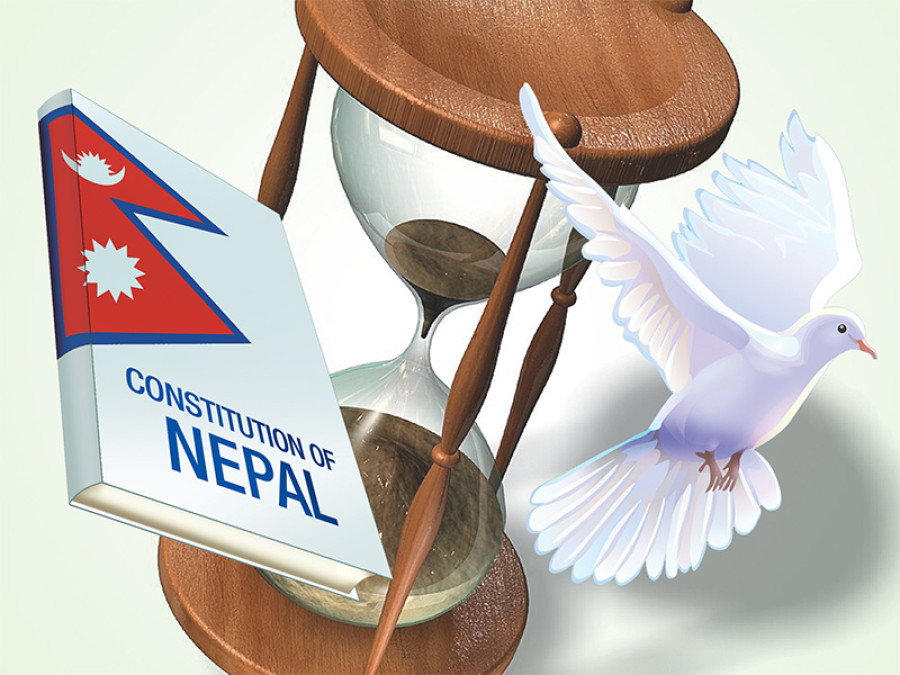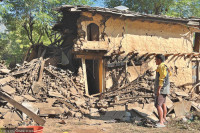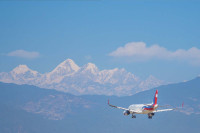Opinion
A new beginning
It is now time to explore the positive aspects of the statute and amicably resolve its deficiencies
Udaya Shumsher Rana
Upon the fall of the Rana Regime in February 1951, the incumbent king Tribhuvan had promised to form a Constituent Assembly (CA) elected by the people to draft the constitution. The Nepali Congress (NC), the party that led the revolution against the Rana regime, and many other mainstream democratic parties have been demanding the election of a CA ever since. But it was only after 65 years and four constitutions later that the sovereignty of the country was wrested from the king and vested upon the ‘people of Nepal’ in legal and practical terms, through the CA elections in 2008. Yet, it was only after a second election to the CA and seven more years of intense dialogues inside the CA and nationwide that led to promulgation of the new constitution—agreed upon by the people of Nepal through their elected members—on September 20.
The new constitution received an overwhelming support inside the CA—507 out of 532 CA members inside the CA Hall voted in favour of it while 25 voted against it. And the people in general are relieved and happy that the transition period has finally come to an end. However, the resentment of the Madhesbadi party leadership against the constitution-writing process earlier and now the content of the statute has marred the path ahead. Yet, the specifics of the demands of the Madhesbadi leaders seem unclear. At the same time, the leaders of the three major parties, commanding more than the required two-third majority in the CA, have failed to convince the agitating forces about the logic and merits of the new constitution.
Contentious issues
The most sensitive issue in the constitution is the perceived inability of the statute to address the injustice suffered by the marginalised sections of society. However, if we go through the constitutions of other developed democratic nations and Saarc countries, our constitution is definitely the most inclusive, whether it be for the women, Dalits, ethnic minorities or the Madhesis. I am not aware if the constitution of other countries ensures the inclusion of marginalised groups—40 percent members in the lower house of the legislature, both at the central or state levels, on basis of proportional representation—as is stipulated in the new constitution of Nepal. Such an arrangement could destabilise future governments as no single party will be able to get a clear majority unless it secures about 45 percent of the popular vote, an unlikely scenario in Nepal under the current electoral system.
To accommodate the demands of the small parties, a minimum threshold to be recognised as a national party has not been included in the constitution either. This could further destabilise the effective functioning of the legislature. Another associated concern is that in Article 42, the right to social justice and right to participation is only mentioned without including the term proportional representation, which was present in the Interim Constitution 2007. However, the prime minister along with the leaders of the three parties have agreed to reincorporate this demand.
The other demand of the Madhesbadi parties is that the proposed 165 constituencies should all be formed on the basis of population alone. This would, however, be unfair to the less populated districts with large areas that lie mainly in the mountainous region. According to the 2011 census, the total population of the country is roughly 26.5 million and if it is divided by 165, you get an average population of around 160,000 per constituency. The districts that have less than the said population will have one constituency each; where as in the remaining districts, the constituencies will be determined solely on the basis of population. This would imply that all the existing districts of the country will have at least one constituency. And based on population there would be approximately 79 constituencies (48 percent) in the 20 Tarai districts and approximately 86 (52 percent) in the rest of Nepal, including the Chure. Therefore, this arrangement will be more or less similar to the one currently proposed. If this is explained to reasonable lawmakers, politicians and think tanks, it should be acceptable to all parties.
The issue of the delineation of the federal states is equally contentious. There are a few leaders and constitutional analysts who argue that the very concept of dividing an unitary state into several federal states could result in unmanageable chaos. Those who are committed to the notion of federalism have made three suggestions: either three to five states running vertically from north to south, or one Madesh Pradesh, or three to fourteen states. Taking all these views into consideration, the six-state model proposed by the first draft constitution seemed to be the most balanced one. But as violent protests broke out in Mid Western region and Karnali, the CA revised its decision and proposed a seven-province model. But while the new formation may have placated those who demanded an undivided Mid-West, the Madhesi population was antagonised. And as a result, violent protests quickly spread through out the southern belt of the country.
In response, the CA conceded to form a Federal Commission to address the views of the opposing forces. It can only be hoped that the Madhesbadi parties will use this commission to drive home their demands and abandon violence. Violence and disruption of work and movement of people and goods will only harm the common people of country and more so of the Tarai where such activities are focused. The reality that the Madhesbadi parities were only able to win 12 out of 116 constituencies (direct elections) located in the Tarai as opposed to 51 seats by NC, 37 by CPN-UML and 12 by UCPN (Maoist) in the second CA election should also be given due consideration in formulating a strategy and setting up future course.
The other problem is that the limited interaction among the senior leaders and MPs, and other central and district leaders in the three major parties. Hence, neither the MPs and other leaders were clear about the effect of the various articles of the constitution and nor were they able to educate their constituents. They were slow to react and by then, the vacuum was filled by inflammatory rumours and extreme views.
Focus on youth
It must be noted that the ‘Nepal’s Constitution’ is a follow up to the Interim Constitution, which was agreed upon by all the protesting parties. And if the two constitutions are closely compared, there are only a few differences between the two. The majority of the demands of the opposing forces have already been addressed.
The constitution has now been promulgated. It is now time to move on and explore the positive aspect of the document and seek solutions to its deficiencies, perceived or real, in an amicable environment. We must remember this is not the end but a beginning and the necessary amendments can be made by two-thirds majority in Parliament.
We, the Nepali people, have gone through the transitional phase for too long and political instability has hampered our economic growth. The public, especially the youth, are getting impatient with the slow progress. So it is high time the country concentrates on economic growth. Now, providing opportunity to the millions of youth that have left Nepal for greener pastures abroad and many in Nepal should be our focus.
Rana is Member of Parliament and President of Nepal Tarun Dal




 19.12°C Kathmandu
19.12°C Kathmandu








%20(1).jpg&w=300&height=200)

